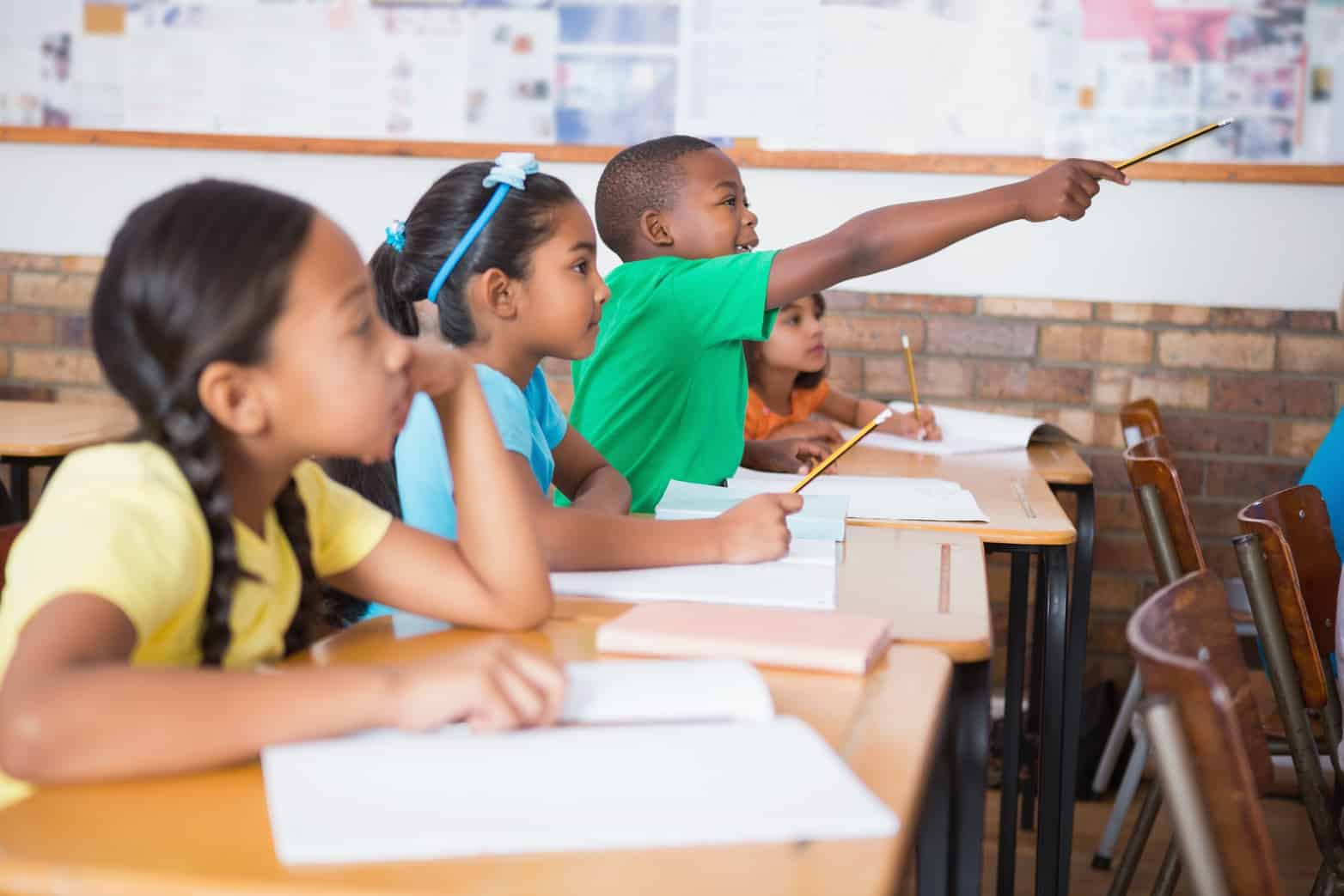A community blog focused on educational excellence and equity

About the topic
Explore classroom guidance, techniques, and activities to help you meet the needs of ALL students.
most recent articles

Shaking Up High School Math

Executive Functions and Literacy Skills in the Classroom

Connecting and Communicating With Families to Help Break Down Barriers to Learning
Discover new tools and materials to integrate into you instruction.

Culture, Community, and Collaboration

Vertical Progression of Math Strategies – Building Teacher Understanding

“Can I have this? Can I have that?”
Find instructions and recommendations on how to adapt your existing materials to better align to college- and career-ready standards.

To Teach the Truth

Helping Our Students See Themselves and the World Through the Books They Read in Our Classrooms

Textbooks: Who Needs Them?
Learn what it means for instructional materials and assessment to be aligned to college- and career-ready standards.

Let’s Not Make Power ELA/Literacy Standards and Talk About Why We Didn’t


What to Consider if You’re Adopting a New ELA/Literacy Curriculum

Not Your Mom’s Professional Development
Delve into new research and perspectives on instructional materials and practice.

Summer Reading Club 2023

Synergy between College and Career Readiness Standards-Aligned Instruction and Culturally Relevant Pedagogy

Children Should be Seen AND Heard
- Submissions Guidelines
- About the Blog
Designing Effective Homework
Best practices for creating homework that raises student achievement

Homework. It can be challenging…and not just for students. For teachers, designing homework can be a daunting task with lots of unanswered questions: How much should I assign? What type of content should I cover? Why aren’t students doing the work I assign? Homework can be a powerful opportunity to reinforce the Shifts in your instruction and promote standards-aligned learning, but how do we avoid the pitfalls that make key learning opportunities sources of stress and antipathy?
The nonprofit Instruction Partners recently set out to answer some of these questions, looking at what research says about what works when it comes to homework. You can view their original presentation here , but I’ve summarized some of the key findings you can put to use with your students immediately.
Does homework help?
Consistent homework completion has been shown to increase student achievement rates—but frequency matters. Students who are given homework regularly show greater gains than those who only receive homework sporadically. Researchers hypothesize that this is due to improved study skills and routines practiced through homework that allow students to perform better academically.
Average gains on unit tests for students who completed homework were six percentile points in grades 4–6, 12 percentile points in grades 7–9, and an impressive 24 percentile points in grades 10–12; so yes, homework (done well) does work. [i]
What should homework cover?
While there is little research about exactly what types of homework content lead to the biggest achievement gains, there are some general rules of thumb about how homework should change gradually over time.
In grades 1–5, homework should:
- Reinforce and allow students to practice skills learned in the classroom
- Help students develop good study habits and routines
- Foster positive feelings about school
In grades 6–12, homework should:
- Prepare students for engagement and discussion during the next lesson
- Allow students to apply their skills in new and more challenging ways
The most often-heard criticism of homework assignments is that they simply take too long. So how much homework should you assign in order to see results for students? Not surprisingly, it varies by grade. Assign 10-20 minutes of homework per night total, starting in first grade, and then add 10 minutes for each additional grade. [ii] Doing more can result in student stress, frustration, and disengagement, particularly in the early grades.
Why are some students not doing the homework?
There are any number of reasons why students may not complete homework, from lack of motivation to lack of content knowledge, but one issue to watch out for as a teacher is the impact of economic disparities on the ability to complete homework.
Multiple studies [iii] have shown that low-income students complete homework less often than students who come from wealthier families. This can lead to increased achievement gaps between students. Students from low-income families may face additional challenges when it comes to completing homework such as lack of access to the internet, lack of access to outside tutors or assistance, and additional jobs or family responsibilities.
While you can’t erase these challenges for your students, you can design homework that takes those issues into account by creating homework that can be done offline, independently, and in a reasonable timeframe. With those design principles in mind, you increase the opportunity for all your students to complete and benefit from the homework you assign.
The Big Picture
Perhaps most importantly, students benefit from receiving feedback from you, their teacher, on their assignments. Praise or rewards simply for homework completion have little effect on student achievement, but feedback that helps them improve or reinforces strong performance does. Consider keeping this mini-table handy as you design homework:
The act of assigning homework doesn’t automatically raise student achievement, so be a critical consumer of the homework products that come as part of your curriculum. If they assign too much (or too little!) work or reflect some of these common pitfalls, take action to make assignments that better serve your students.
[i] Cooper, H. (2007). The battle over homework (3rd ed.). Thousand Oaks, CA: Corwin Press.
[ii] Cooper, H. (1989a). Homework .White Plains, NY: Longman.
[iii] Horrigan, T. (2015). The numbers behind the broadband ‘homework gap’ http://www.pewresearch.org/fact-tank/2015/04/20/the-numbers-behind-the-broadband-homework-gap/ and Miami Dade Public Schools. (2009). Literature Review: Homework. http://drs.dadeschools.net/LiteratureReviews/Homework.pdf
- ELA / Literacy
- Elementary School
- High School
- Mathematics
- Middle School
Leave a Reply Cancel reply
Your email address will not be published. Required fields are marked *
About the Author: Claire Rivero is the Digital Strategy Manager for Student Achievement Partners. Claire leads the organization’s communications and digital promotion work across various channels including email, Facebook, Twitter, and Pinterest, always seeking new ways to reach educators. She also manages Achieve the Core’s blog, Aligned. Prior to joining Student Achievement Partners, Claire worked in the Communications department for the American Red Cross and as a literacy instructor in a London pilot program. Claire holds bachelor’s degrees in English and Public Policy from Duke University and a master’s degree in Social Policy (with a concentration on Education Policy) from the London School of Economics and Political Science.
Stay In Touch
Like what you’re reading? Sign up to receive emails about new posts, free resources, and advice from educators.
- Skip to Nav
- Skip to Main
- Skip to Footer

- Saved Articles
- Newsletters

How to Create Effective Homework
Please try again
Based on a recent spate of articles on homework, it’s clear that the homework wars -- how much? how often? -- are still topic of big interest to both parents and teachers. Some teachers hate to give homework; others see it as a vital necessity. But according to some research presented by Annie Murphy Paul, the question isn’t how much, but whether the homework teachers do give actually advances learning.
“A recent study, published in the Economics of Education Review,” Paul wrote in “How Can We Make Homework Worthwhile?” , “reports that homework in science, English and history has ‘little to no impact’ on student test scores. (The authors did note a positive effect for math homework.) Enriching children’s classroom learning requires making homework not shorter or longer, but smarter.” Paul goes on to describe specific practices, like spaced repetition (in which information is presented and repeated spaced out over time), retrieval practice (testing or quizzing not for assessment, but to reinforce material learned), and cognitive disfluency (“desirable difficulties” used to make learning stick) -- all memory/retrieval techniques that may help homework move beyond busy work and advance real learning.
But to get those elements to work, said Fires in the Mind author and speaker Kathleen Cushman, students must be motivated to do their homework in the first place. One example Cushman gave was creating a project so interesting and involved, students naturally wanted to keep working on it after the bell rang. She pointed to a chapter in the book where she describes a particular motivation for some high school students she interviewed, under the heading “Homework We Actually Want to Do”:
“Christina and Nicholas both remembered a global studies unit on the French Revolution in which students acted out a courtroom trial of the king and queen. The project brought even routine homework assignments to life, they said.
“I was the queen. So of course I wanted to do my homework all the time, so I could know the facts of what happened and what didn’t happen, know what I wanted to say when someone tried to say I did this or that thing. I could say, ‘Oh no, I didn’t!’ - because I’d read my homework,” said Christina.
Christina was using a form of retrieval practice -- but because it was so much fun to be the queen, she only knew she wanted to stay in character. The queen had to study the information to get it right.
Another way teachers can take a good, hard look at homework practices, said Cushman, is to ask themselves a few vital questions: “Does this homework ask each student to practice something that the student hasn’t yet mastered? Does the student clearly see its purpose? When students are asked to repeat or rehearse something, does it require them to focus? Or can they do it without really paying attention?” If the homework meets these criteria, she said, then it falls into the desirable realm of “deliberate practice .”
Dan Bisaccio, former high school science teacher and now Director of Science Education at Brown University, said that after years of experience giving homework to high school students, he now “preaches” to his future teachers: “Homework should be practice and extensions of what happens in class and should not be ‘new learning,’” he said. “That is, students [shouldn’t be] having to teach themselves new content or skills.”
He said he agreed with Cushman that motivation is key, and tried to design homework that kept students interested. “Teachers need to clue into what motivates their students, giving them something that they really want to complete, and complete well.” One assignment Bisaccio used, called an “Experience Map,” asked students to create a map of their experiences after a field study or other important project - a technique employing both retrieval practice and the somewhat trickier interleaving, a “desirable difficulty” in which problems of different types are presented in one assignment, making students think harder to come up with solutions and answers.
“We ‘map’ mentally and physically each day. It helps to keep us orientated through our frenzied sun-up to sun-down daily experiences,” reads the assignment. Directions are to draw a field experience map, including -- with regard to the class -- where students have been, what they have done, new challenges, and insights. Special suggestions for drawing include “a place of danger, a favorite place, a place of power, a place with a secret.” Students are also called upon to map the places where they learned the most, where they were challenged the most, and where the funniest experience happened.
In addition, Bisaccio asked students to write what had challenged them most as a learner, what had stretched their limits most -- meant to be reflections just for students themselves, and asked to be kept on the back of the map. “What they wrote on the back was not shared with others,” he said. Once the assignment was completed, maps were posted to form a class atlas of what they had learned.
All the examples included here, however, are examples of homework in a traditional classroom. What about homework in a flipped classroom , where the lectures, usually videos, are the homework? A recent New York Times article on flipped classrooms may provide insight into flipping homework on its head, too: it quoted high school senior Luwayne Harris, saying, “Whenever I had a problem on the homework, I couldn’t do anything about it at home. Now if I have a problem with a video, I can just rewind and watch it over and over again.”

Homework: How to Effectively Build the Learning Bridge

How has the global health crisis impacted the place that homework has in student learning and the school-home connection? Homework holds its place as a school tradition, expected by students and their parents as part of the experience of growing and learning. While there is ongoing debate about homework’s effectiveness, it is traditionally seen as a tool that strengthens academics by providing learning practice at home. John Hattie’s meta-analysis of relevant research on educational practices found that the overall effects of homework on learning are positive, and that the positive effect is highest for junior high and high school students but generally neutral for elementary students. In addition, there is variability depending on the type of homework as well as student demographics (Hattie, 2008).
Schools implementing the Responsive Classroom approach, whether in person or virtually, use homework to effectively build a learning bridge between home and school. When homework is used as a tool to build social, emotional, and academic learning beyond the school day, it takes on a different look and purpose than just more work to do at home. The goal of Responsive Classroom schools is to design homework that meets the basic needs of significance and belonging for every student by strengthening relationships, differentiating what success looks like for each child, and supporting students’ social, emotional, and academic learning.
Focus on Relationships
Homework that impedes relationships— either teacher-to-student, teacher-toparent, or student-to-parent—can potentially damage the home-school partnership. When educators examine the amount, type, and expectations of homework, they often start with the impact of homework on academic achievement. But when schools look beyond academic achievement and also include relationships, they will often rethink the look and purpose of homework.
Effectively building this school-to-home connection starts by replacing homework that impedes relationships with homework that will enhance them. Examples for building these connections include ways for students to share about family traditions, cultural practices, and/or family adventures. Lauren Komanitsky, a special education teacher at Christa McAuliffe Middle School in Jackson, New Jersey, observes:
I’ve seen tremendous enthusiasm for homework and projects that involve family members and their family history. [Students] love to learn about ancestors, interesting facts and stories, and simply getting a deeper understanding of their background. It inspires pride in them and that’s important for their identity. Students also love to do surveys and interviews of their family members. I think anything designed to create good, meaningful conversation between students and their families is time well spent. Lauren Komanitsky (personal communication, February 7, 2021)
Schools that use homework to strengthen home-school relationships embed opportunities for students to develop belonging and significance. As students share the home connections with their classmates and teachers, the classroom community will develop a larger sense of belonging because students see connections among common experiences.
Build Success for Every Student
Classrooms are diverse communities. While teachers intentionally differentiate learning during the school day, providing homework that meets the individual and cultural needs of each student requires additional attention.
One strategy for success for every student is to provide choice. Komanitsky has seen this strategy work when she has had students reflect on what they need and then select homework to meet that need:
Having kids select specific problems from a group, select what part of an overall project they are choosing to focus on, etc. . . . helps with creating a sense of autonomy. When we can give kids a choice in their learning based on their own self-reflection, they learn what it feels like to be in control of the process and this leads to more success. Lauren Komanitsky (personal communication, February 7, 2021)
When homework is designed for success for each student, the bridge between home and school supports a higher level of success and engagement.
Include Practice of Social and Emotional Learning Skills
The first guiding principle of the Responsive Classroom approach states, “Teaching social and emotional skills is as important as teaching academic content.” Social and emotional learning (SEL) is embedded in academic learning throughout the school day. Teachers can create a bridge between home and school by suggesting opportunities for students to practice SEL skills at home and in their community. For example, parents can have their children practice speaking with confidence by having them “make a request, place an order, or thank customer service workers” (Wilson, 2014, p. 67).
In addition, homework may involve students having conversations with family members about their learning histories—the successes, struggles, and strategies t hey encountered when they were students at different levels. When family members share their learning histories, students discover the application of the SEL and academic competencies of perseverance, cooperation, and responsibility. As Komanitsky points out:
When we share how we overcame struggles in certain academic subjects, it encourages perseverance and resilience in our students. Having parents and kids discuss their personal strengths and weaknesses and how they compensate when necessary is also a really good conversation. Lauren Komanitsky (personal communication, February 7, 2021)
Homework that focuses on SEL competencies provides for the transfer of these vital skills to a variety of real-life situations, both at home and in the community.
When schools approach homework as an extension of the learning day and see it as a way to strengthen relationships—between teachers and parents, students and parents, and students and teachers—homework becomes a valuable part of the school experience for every child. Students’ needs for belonging and significance are met and strengthened when homework provides for individual success. And when educators view homework as a tool to strengthen academic, social, and emotional learning, it becomes a valuable piece of the learning puzzle for every student.

- Hattie, J. (2008). Visible learning: A synthesis of over 800 meta-analyses relating to achievement. Routledge.
- Wilson, M. B. (2014). The language of learning: Teaching students core thinking, listening, and speaking skills. Center for Responsive Schools, Inc

IMAGES
VIDEO